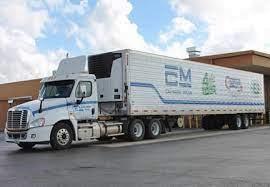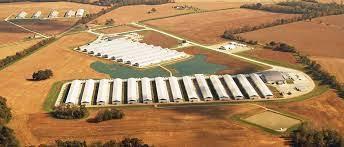In a press release at close of trading on December 28th Cal-Maine Foods (CALM) announced results for the 2nd Quarter of FY 2023 ending November 26th 2022. The Company exceeded the topline consensus estimate of $798 million but fell short of the projected EPS of $4.24. This report summarizes data provided in the release in addition to the Q-10 Report 
Cal-Maine represents a bellwether for the shell egg sector as the only public-quoted pure-play company in the industry. The following table summarizes the results for the period compared with the values for the corresponding quarter of the previous fiscal year (Values expressed as $ x 1,000 except EPS)
|
2nd Quarter Ending
|
November 26th 2022
|
November 27th 2021
|
Difference (%)
|
|
Sales:
|
$801,700
|
$381,723
|
+110
|
|
Gross profit:
|
$317,849
|
$43,747
|
+641
|
|
Operating income (loss):
|
$259,868
|
$(2,065)
|
+13 x103
|
|
Pre-tax income
Net income
|
$262,268
$198,294
|
$468
$1,145
|
+56 x103
+17 x103
|
|
Diluted earnings per share:
|
$4.07
|
$0.02
|
+2 x103
|
|
Gross Margin (%)
|
39.6
|
11.5
|
+244
|
|
Operating Margin (%)
|
32.4
|
-0.5
|
+6 x103
|
|
Profit Margin (%)
|
24.7
|
+0.3
|
8 x103
|
|
Non-current liabilities
|
9,410
|
10,274
|
-8.4
|
|
12 Months Trailing:
|
|
|
|
|
Return on Assets (%)
|
15.5
|
|
|
|
Return on Equity (%)
|
25.2
|
|
|
|
Operating Margin (%)
|
16.2
|
|
|
|
Profit Margin (%)
|
13.1
|
|
|
|
Total Assets Nov 26th 2022/May 28th 2022
|
$1,763,440
|
$1,427,489
|
+23.5
|
|
Market Capitalization December 28th 2022
|
$3,121,000
|
|
|
Notes: $2.4 million ‘other income,’ Q2 2023 compared to $2.5 million in Q2 FY2022:
$29 million gain on disposal of assets, Q2 2023 compared to $2 million loss in Q2 2022.
$ 0.3 million Royalty Income, Q2 2023 compared to $0.3 million Q2 2022
$0.15 million from equity investment, Q1 FY 2023 compared to $0.14 million Q1 2022
$1.90 million interest income, Q2 FY 2023 compared to $0.2 million Q2 2022
No acquisitions in Q2 2023
Capital expenditure Q2 2023 $59.7 million including an allocation of $14 million for Meadow Creek Foods
 Trailing P/E 11.3
Trailing P/E 11.3
52-Week Range in Share Price: $35.10 to $65.32 50-day Moving average $58.22
Market Close, Wednesday, December 27th pre-release: $62.19.
After hours, down 5.1 percent to $59.00.
In reviewing the CALM quarterly report the following calculated values represent key data for the most recent Quarter. (Q2 Fiscal 2022 and percent difference in parentheses):-
- Shell egg sales attained $769.695 million in Q2 2023 based on this category representing 96.0 percent of total revenue. ($368.059 million in Q2 2022, based on 96.8 percent of revenue. (Sales value up by 109.1 percent)
- Dozen shell eggs sold (thousands): 284,086 (269,555; +5.3%)
- Average selling price of all shell eggs from data released: $2.71 per dozen; ($1.37 per dozen; +97.8%).
- Average selling price of specialty eggs (excluding co-pack) from data released: $2.37 cents per dozen; ($1.90 per dozen; +24.7%).
- Average selling price of generic eggs from data released: $2.88 cents per dozen; ($1.15 cents per dozen; +150.4%).
- Negative differential for specialty eggs against generic eggs: -$0.51 cents per dozen; (+$0.75 per dozen; -168%)
- Specialty eggs as a proportion of volume sold: 33.8%; (28.7%; +17.7%)
- Specialty eggs as a proportion of sales value: 29.4%; (39.7%; -25.9%)
- Proportion of eggs sold that were produced by Cal-Maine and contract flocks: 92.0% (95.3% -3.5%;).
- Cost of purchased eggs $3.14 cents per dozen ($1.56 cents per dozen, +101.3%)
- Farm feed cost: 68.5 cents per dozen, (52.9 cents per dozen, +29.5%)
- Egg product sales attained $28 million with a unit value of $1.79 per lb.
- During Q2 FY 2023 cage-free eggs attained 18.2 percent of sales value compared to 22.4 percent in Q2 FY 2022. Sales volume however increased 47.4 percent over Q2 FY 2022.
- Cal-Maine Foods maintained a flock of 43.7 million hens with 10.4 million pullets and breeders at the end of Q2 FY 2023.
The following observations relate to the comparison of Q2 2023 with the corresponding quarter in 2022:-
- Cal-Maine Foods was not affected by the 2022 HPAI epornitic as of the release.
- Q2 of FY 2023 represented a more favorable marketing comparison to Q2 2022 based on higher prices for shell eggs, as influenced by depopulation of 38.5 million hens in the U.S. prior to and during Q2, coupled with high demand. Restrictions due to COVID on institutional and consumer segments were in large measure removed during Q2 of FY 2023
- Gross profit was impacted positively by higher unit revenue for generic eggs but offset by significantly higher farm production costs including feed (68.5 cents per dozen) and additionally by inflation in labor, fuel and consumables (38.6 cents per dozen).
- In a market characterized by high unit prices, the relative contribution of specialty eggs is less important to net earnings in contrast to a down market as in previous quarters. Enigmatically generic eggs generated a higher unit price and presumably margin compared to specialty eggs.
- Responding to demand with the shortage of available eggs Cal-Maine increased the purchase of nest run eggs for packing and sale to 8.0 percent of sales volume compared to 1.4 percent during the corresponding Q2 of FY 2022.
- Apart from the Family-trust and other insider shareholding of 10.8 percent, institutions hold 94.3 percent of equity. Shares short on November 30th attained 22.2 percent of float.
- Cal-Maine Foods declared a dividend of $1.35 per Class A share.
 In commenting on results for the 1st Quarter of FY 2023, Sherman Miller, CEO of Cal-Maine Foods stated, “We are proud to report another strong quarterly financial and operating performance for Cal-Maine Foods, with record sales and net income for the second quarter of fiscal 2023. These results reflect the current market environment characterized by record average selling prices for conventional eggs, primarily due to reduced supply related to the outbreak in the U.S. of highly pathogenic avian influenza (“HPAI”), and good customer demand. Consumer demand for shell eggs continued to be good in the quarter, especially leading up to the Thanksgiving holiday, and we experienced record quarterly volume levels for specialty eggs sold. As always, we strive to offer consumers a wide range of quality choices in shell eggs as well as enhanced egg products offerings. Our ability to meet changing demand trends with a favorable product mix has been an important differentiator for Cal-Maine Foods. With solid execution, we continued to meet the needs of our customers”. Miller added “Our results demonstrate the strength of our operating model and ability to execute our growth strategy in a dynamic environment. We believe we are uniquely positioned to leverage our scale to manage various market cycles and continue to extend our customer reach”.
In commenting on results for the 1st Quarter of FY 2023, Sherman Miller, CEO of Cal-Maine Foods stated, “We are proud to report another strong quarterly financial and operating performance for Cal-Maine Foods, with record sales and net income for the second quarter of fiscal 2023. These results reflect the current market environment characterized by record average selling prices for conventional eggs, primarily due to reduced supply related to the outbreak in the U.S. of highly pathogenic avian influenza (“HPAI”), and good customer demand. Consumer demand for shell eggs continued to be good in the quarter, especially leading up to the Thanksgiving holiday, and we experienced record quarterly volume levels for specialty eggs sold. As always, we strive to offer consumers a wide range of quality choices in shell eggs as well as enhanced egg products offerings. Our ability to meet changing demand trends with a favorable product mix has been an important differentiator for Cal-Maine Foods. With solid execution, we continued to meet the needs of our customers”. Miller added “Our results demonstrate the strength of our operating model and ability to execute our growth strategy in a dynamic environment. We believe we are uniquely positioned to leverage our scale to manage various market cycles and continue to extend our customer reach”.
Max Bowman, CFO of Cal-Maine Foods of Cal-Maine Foods noted, “Our financial results for the quarter were boosted by a record top line performance of $801.7 million in net sales. Net income of $198.6 million for the second quarter of fiscal 2023 was another Company record. The significantly higher selling prices, our enduring focus on cost control, and our ability to adapt to inflationary market pressures led to improved profitability overall with a gross profit margin of 39.6% for the second quarter of fiscal 2023, another record for Cal-Maine Foods.
The earnings release included information on future conversion to cage-free production:- “As market demand for specialty eggs, especially cage-free eggs, has increased, Cal-Maine Foods has made substantial investments in its production facilities to expand the Company’s cage-free capacity and distribution capabilities. A significant number of Cal-Maine Foods’ customers previously announced goals to offer cage-free eggs exclusively on or before 2026, though some of these customers have extended those timelines to the end of 2030. The Company continues to monitor the increasing demand for cage-free eggs and to engage with its customers in efforts to achieve a smooth transition toward their announced timelines for cage-free egg sales” Cage-free egg sales comprised 18.2% of total net shell egg sales in Q2 of FY 2023 compared to 22.4 percent of Q2 FY 2022 revenue but this category was 47.4 percent higher in volume.
The Q-10 Report issued at the end of Q1 2023 documented an approved capital investment of $293.9 million for cage-free conversions and additional upgrades to processing for FY 2023 through FY 2025. Of this total $143.0 million had been committed with $130.9 to be assigned in FY 2024 and 2025.
On the topic of future supply and the restraint of HPAI the report commented, “Cal-Maine Foods is closely monitoring the current outbreak of HPAI. There have been no positive tests for HPAI at any Cal-Maine Foods’ owned or contracted production facility as of December 28, 2022. The Company believes the HPAI outbreak will continue to exert downward pressure on the overall supply of eggs, and the duration of these effects will depend in part on the timing of replenishment of the U.S. layer hen flock. According to a LEAP Market Analytics report dated December 8, 2022, the layer hen inventory is not projected to exceed the 328 million mark again until December of 2023. Layer hen numbers reported by the USDA as of December 1, 2022, were 308 million, which represents a decrease of 5.8% compared with the layer hen inventory a year ago. Cal-Maine Foods believes it has been mindful and proactive in implementing and maintaining robust biosecurity programs across all its locations and facilities. The Company is working closely with federal, state and local government officials, and focused industry groups to mitigate the risk of this and future outbreaks, and effectively manage a response, if needed.